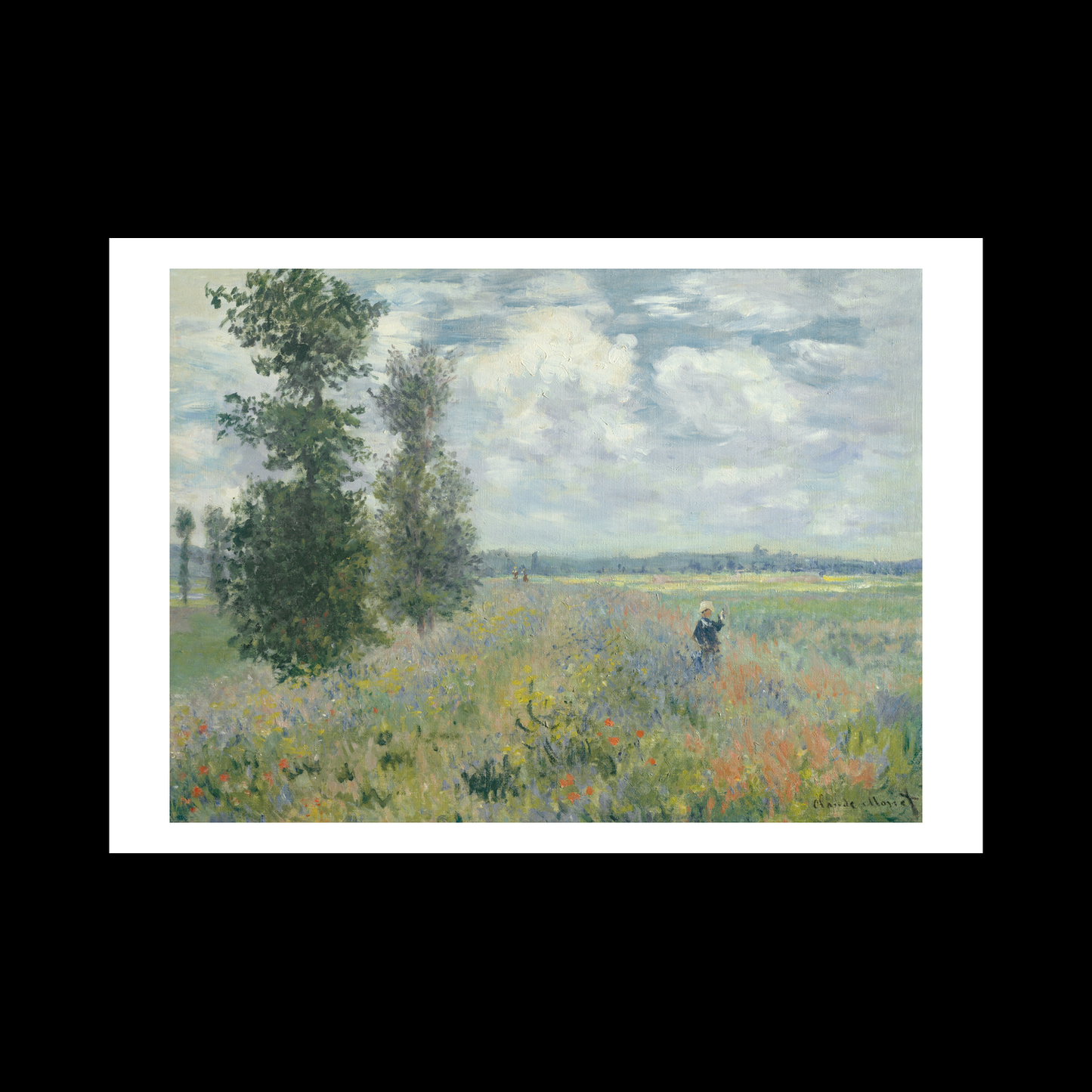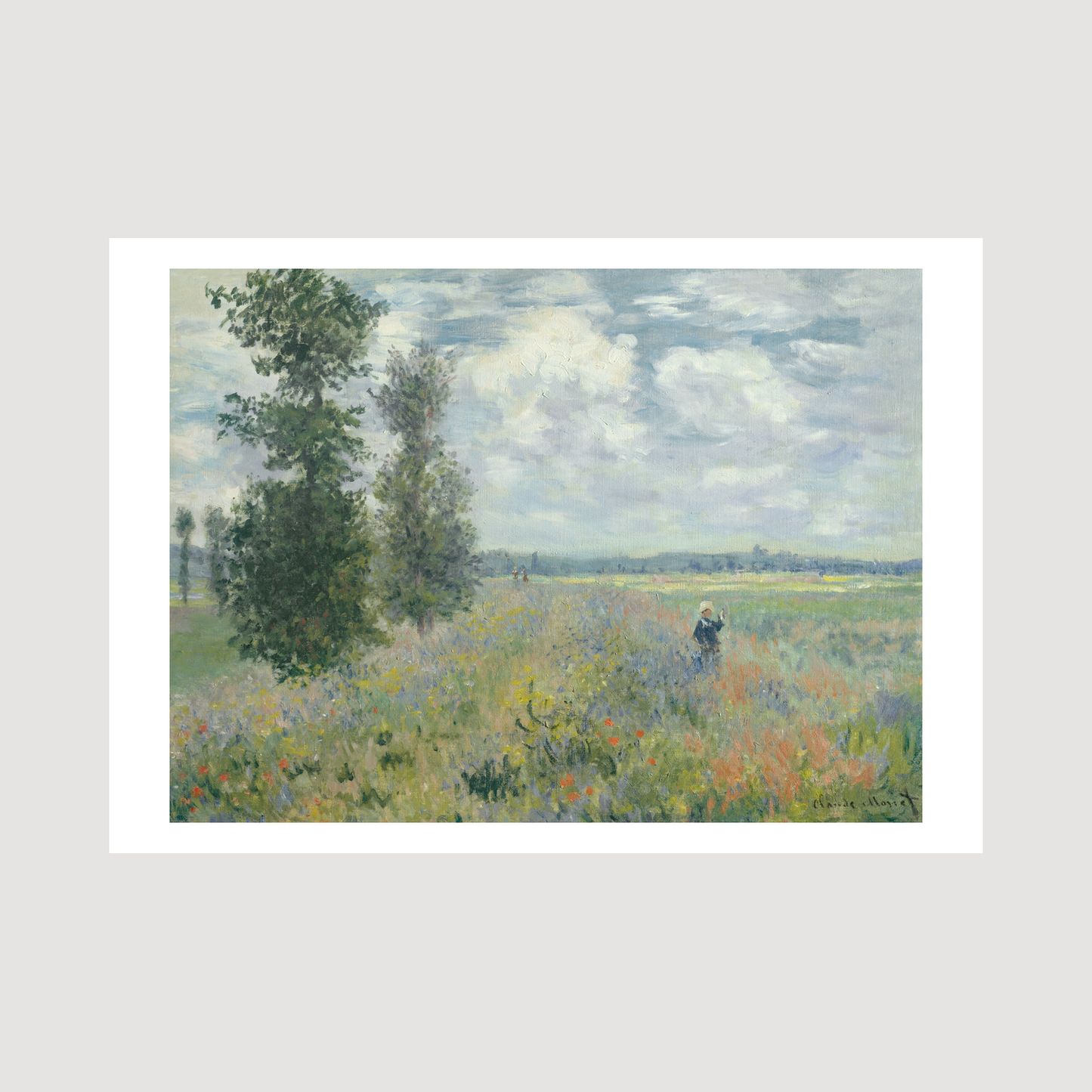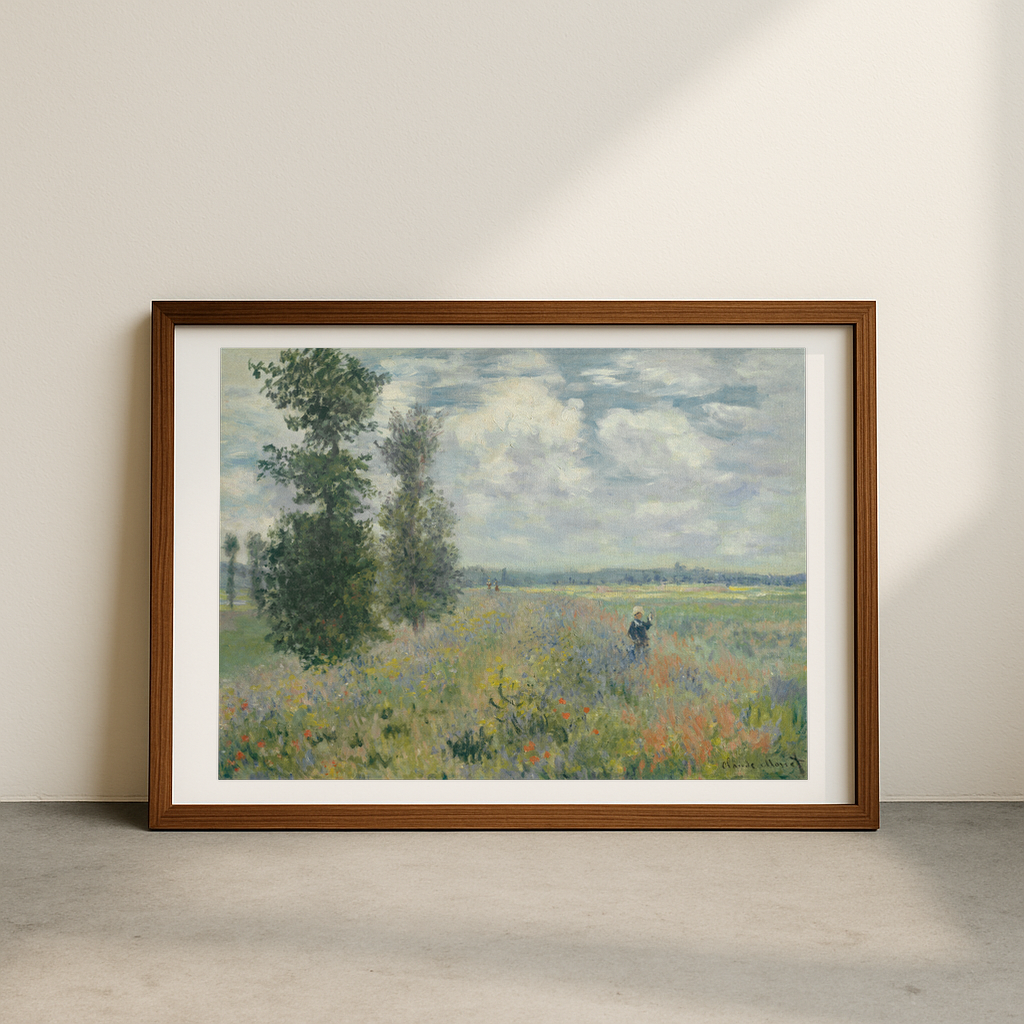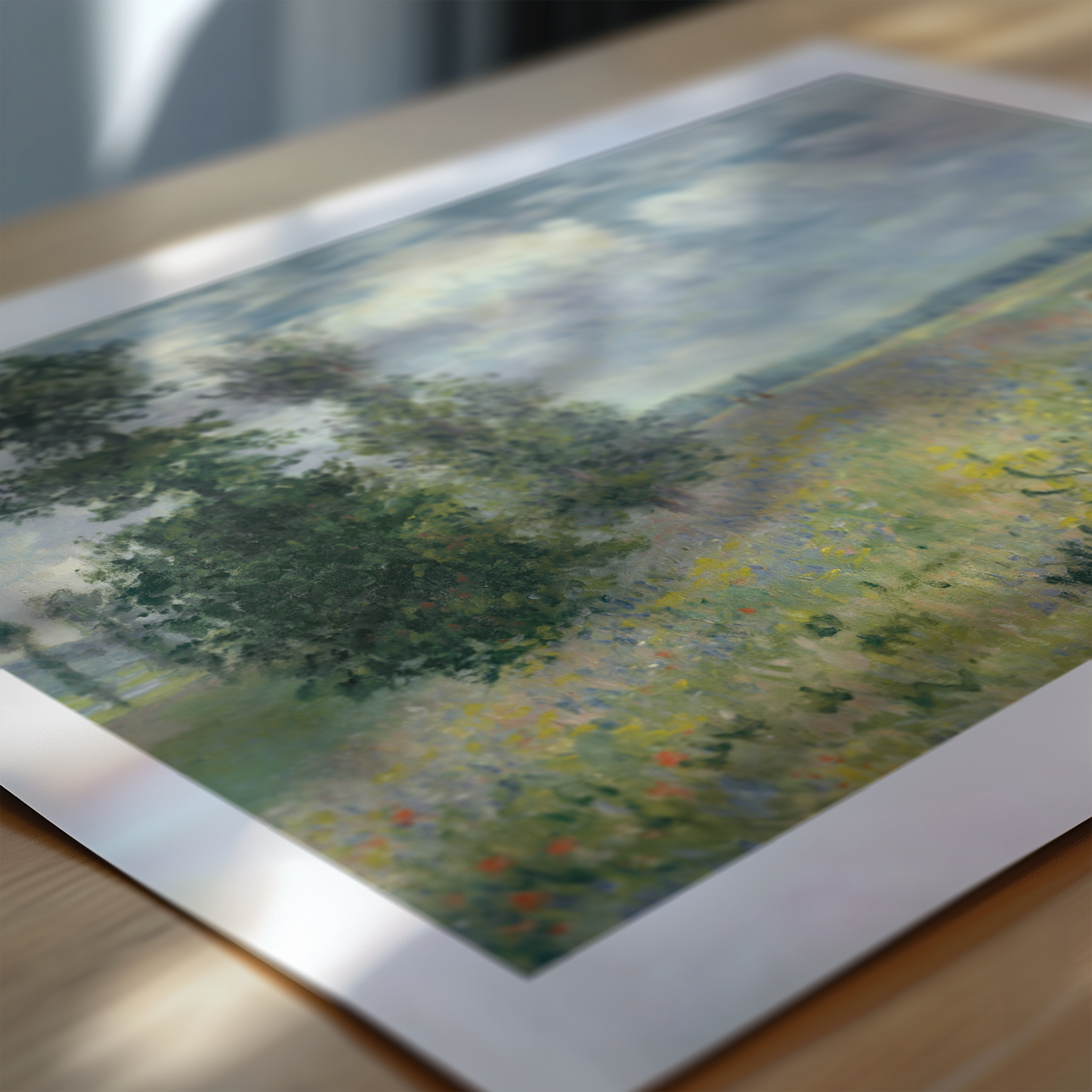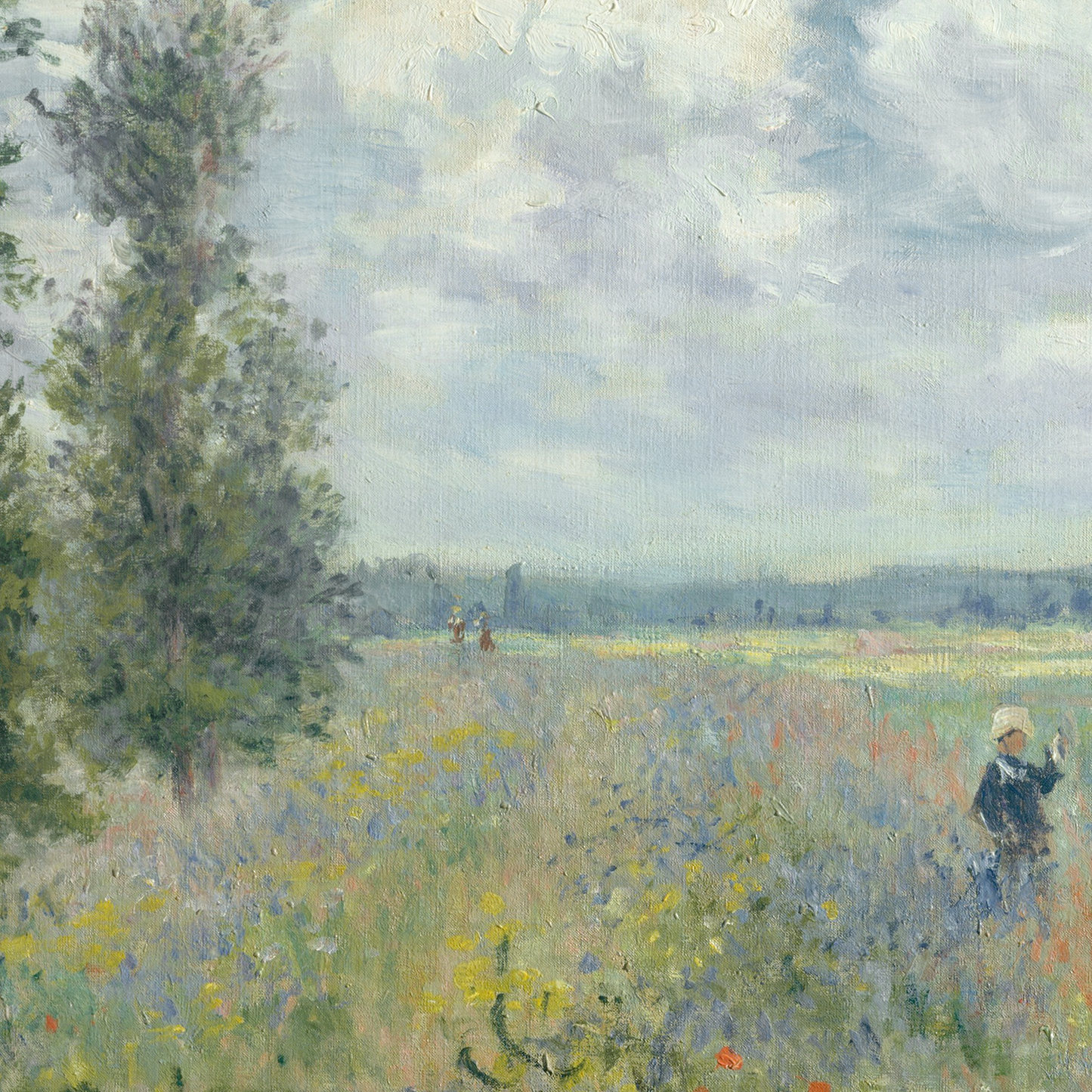1
/
of
6
Poppy Fields near Argenteuil (1875)
Poppy Fields near Argenteuil (1875)
Regular price
£12.45 GBP
Regular price
Sale price
£12.45 GBP
Taxes included.
Quantity
Couldn't load pickup availability
"Poppy Fields near Argenteuil" (1875) captures Claude Monet's mastery of light and colour during his pivotal years in the French countryside. The painting showcases a vibrant field of red poppies stretching towards the horizon, punctuated by casual strollers beneath a cloud-dappled summer sky. Monet's distinctive brushwork creates a sense of movement, as if a gentle breeze is rustling through the flowers, while his signature impressionist technique renders the scene with spontaneous, loose strokes that dissolve detail into pure visual sensation.
This work emerged during a particularly productive period when Monet lived in Argenteuil, a small town along the Seine River. The area's rural charm and proximity to Paris made it a favourite retreat for impressionist painters seeking to capture the changing effects of natural light. The red poppies, which grew wild in French fields after the land was left fallow, became a recurring motif in Monet's work, symbolising both the beauty of the French countryside and the modernisation that would eventually transform these pastoral scenes.
The painting reflects Monet's revolutionary approach to outdoor painting, or 'en plein air', which he championed alongside fellow impressionists. Rather than working in a studio, Monet painted directly in the field, racing against changing light conditions to capture fleeting atmospheric effects. His choice of subject matter - ordinary flowers in a common field - challenged traditional academic painting's focus on historical and mythological subjects, demonstrating how everyday scenes could be transformed into expressions of pure visual poetry through modern painting techniques.
View full details
This work emerged during a particularly productive period when Monet lived in Argenteuil, a small town along the Seine River. The area's rural charm and proximity to Paris made it a favourite retreat for impressionist painters seeking to capture the changing effects of natural light. The red poppies, which grew wild in French fields after the land was left fallow, became a recurring motif in Monet's work, symbolising both the beauty of the French countryside and the modernisation that would eventually transform these pastoral scenes.
The painting reflects Monet's revolutionary approach to outdoor painting, or 'en plein air', which he championed alongside fellow impressionists. Rather than working in a studio, Monet painted directly in the field, racing against changing light conditions to capture fleeting atmospheric effects. His choice of subject matter - ordinary flowers in a common field - challenged traditional academic painting's focus on historical and mythological subjects, demonstrating how everyday scenes could be transformed into expressions of pure visual poetry through modern painting techniques.
